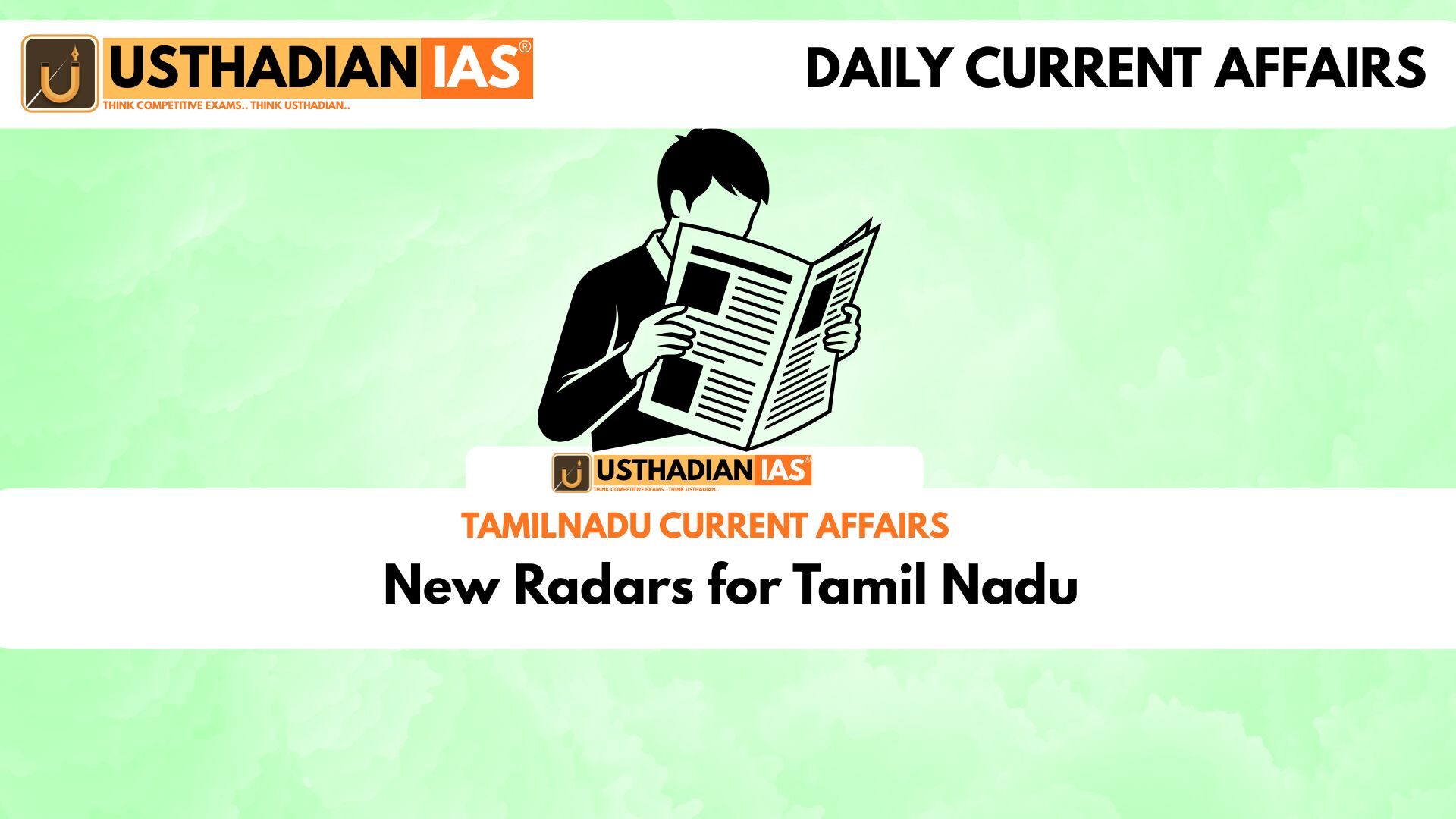Expansion of Weather Radar Network
New Radars for Tamil Nadu: Tamil Nadu is set to enhance its weather monitoring infrastructure with the installation of additional radars. The move aims to improve forecasting accuracy and timely alerts for extreme weather events. Static GK fact: The India Meteorological Department (IMD) currently operates over 70 weather radars across the country.
The state capital Chennai is planned to receive three new X-band radars. These will supplement the existing S-band and X-band systems, providing higher resolution and better rainfall measurement. Static GK Tip: X-band radars are particularly effective in detecting short-range weather events like heavy rainfall and thunderstorms.
National Radar Expansion Plan
Tamil Nadu’s radar upgrades are part of a broader national initiative. The government intends to install 100–120 weather radars across India to strengthen climate monitoring and disaster preparedness. Static GK fact: This plan aligns with the IMD’s strategy to modernize its observation network for enhanced predictive capability.
Site selection for new radars is underway, prioritizing locations with high vulnerability to extreme weather. Coastal areas and flood-prone regions are receiving special attention to ensure timely alerts. Static GK Tip: Early warning systems can reduce casualties and economic losses during cyclones and heavy rainfall events.
Technological Benefits
The combination of S-band and X-band radars allows for comprehensive weather observation. S-band radars cover long-range monitoring, while X-band radars provide precise local data. This dual system enhances forecast reliability, especially during monsoons.
Improved radar density also benefits agriculture, water management, and urban planning. Farmers and authorities can make informed decisions on irrigation, flood control, and emergency response. Static GK fact: India receives an average annual rainfall of around 1170 mm, making accurate monitoring crucial for resource management.
Future Outlook
With the planned expansion, Tamil Nadu aims to set a benchmark in regional weather forecasting. The project will integrate real-time radar data with forecasting models, improving disaster management. Static GK Tip: Enhanced radar coverage supports early warning dissemination via apps, alerts, and media broadcasts.
The initiative represents a step toward climate-resilient infrastructure, aligning with India’s broader environmental monitoring goals. It underscores the importance of technological modernization in reducing the impact of natural disasters.
Static Usthadian Current Affairs Table
New Radars for Tamil Nadu:
| Topic | Detail |
| Tamil Nadu Upgrades | Additional X-band radars planned for Chennai and state-wide sites |
| Current Systems | Existing S-band and X-band radars in operation |
| National Plan | 100–120 weather radars to be installed across India |
| Purpose | Improve forecasting accuracy and disaster preparedness |
| Site Selection | Focus on coastal and flood-prone areas |
| Benefits | Enhanced monitoring, agriculture planning, flood management |
| Technology | Dual S-band and X-band systems for long-range and precise detection |
| Future Outlook | Real-time radar integration and climate-resilient infrastructure |








